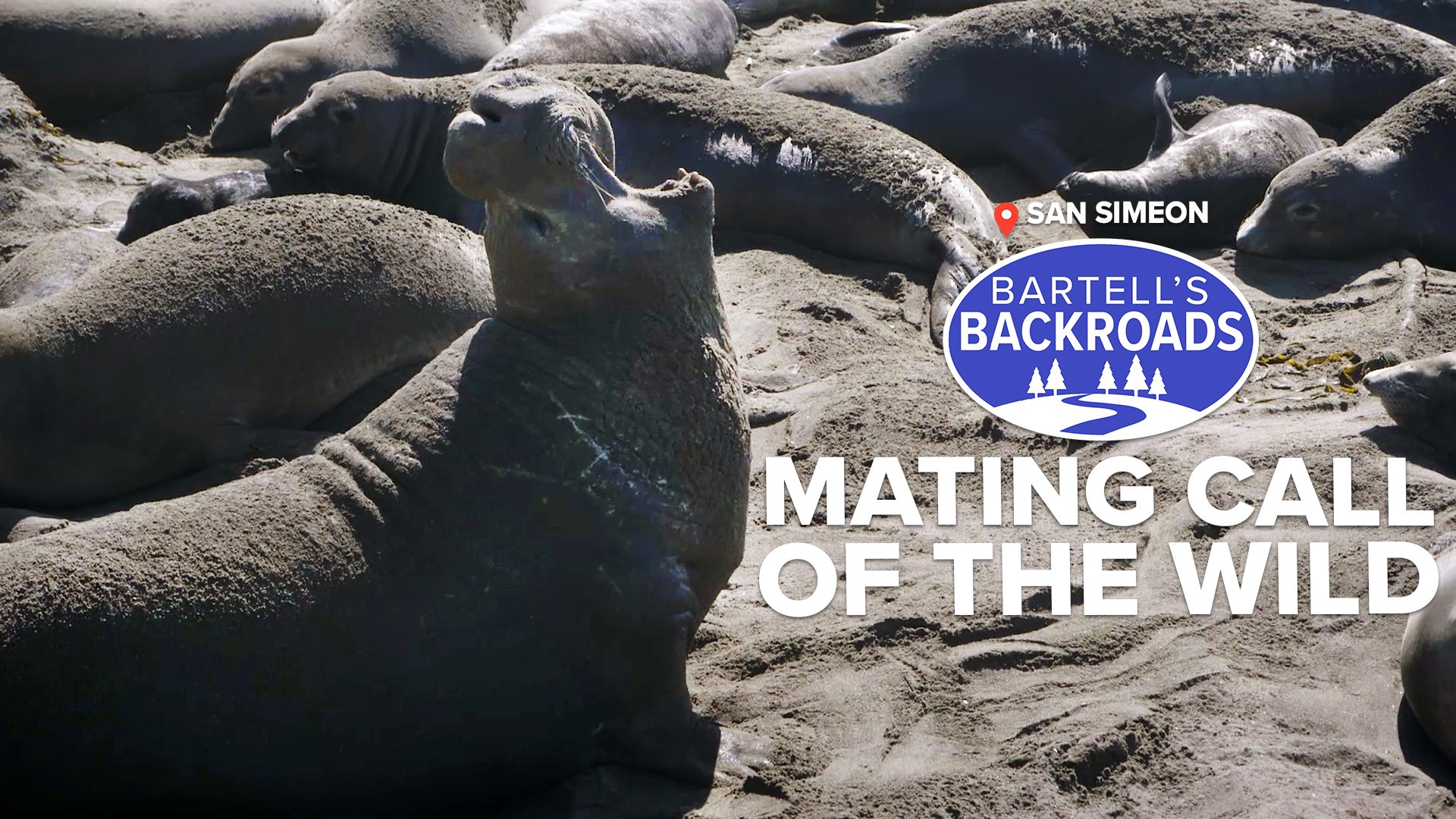SAN SIMEON, Calif. — The view from Hearst Castle is breathtaking. The San Simeon coastline with its rolling hills is one of the most peaceful locations along Highway 1 and the Central Coast. There are, however, some very noisy neighbors that hog the beach near Piedras Blancas.
“The noise is coming from elephant seals,” said state parks interpretive manager Robyn Chase. “When I come out here I give them lots of space to say what they need to say. They are the star of the show anytime you come out to the rookery.”
The reason Chase likes to give these animals a lot of space is that the conversation can get very heated and sometimes violent.
“The deep bellowing kind of calls come from one of our alpha males on the beach. He is surrounded by your cackling females,” said Chase.
These noisy bellows and cackles from the Piedras Blancas elephant seals are at their loudest from December to March. That is birthing and mating season, and alpha elephant seal males get very jealous.
“They will make the vocalization call and that is your first warning. If you do not move out of the way, the chase begins,” said Chase.
TAKE A TRIP ON BARTELL'S BACKROADS:
► See an interactive map of everywhere John has visited on the backroads
► Watch all of the Backroads videos
► Follow John on Facebook
The chase is more like a sluggish gallop. The 4,000-pound males are protecting their harems of about 40 females who are nursing their pups in an area called a "rookery."
“She is going to nurse around the clock and the pups will get huge. It's going to go from about 80 pounds to 300 pounds in one month. Basically, it will be a ball of blubber on the beach,” said Chase.
A rookery is a safe beach that elephant seals return to every year and the Piedras Blancas rookery is one of just a handful of rookeries left in the world.
During the early and late 1800s, an untold number of elephant seals were killed so their fat could be used as fuel in lamps and candles.
“People were actually hunting whales and elephant seals for their blubber. They were turning it into oil,” said Chase. “Sadly the elephant seal population declined to less than 100 animals."
For many years, elephant seals were thought to be extinct until researchers found a small group of them living on an island in Mexico.
“Protections were put into place and they rebounded very well, and all are descendants of less than 100 animals,” said Chase.
The elephant seal is one of California’s greatest conservation stories, allowing researchers to learn all sorts of important and odd facts about the species, including why the elephant seal’s nose is so big.
“It's like a secondary characteristic. Kind of like a man’s beard. Like a little scruff on your face,” said Chase.
The Piedras Blancas elephant seal viewing deck is open daily.
SEE MORE SEA LIFE FROM THE BACKROADS: Welcome to Dana Point, California's dolphin and whale watching capital.



















